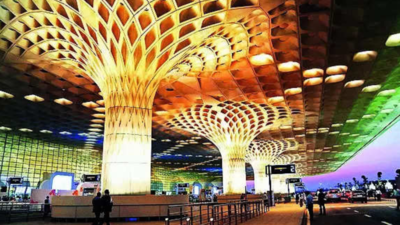
According to data released by Dubai Airports, DXB handled over 41 million passengers between January and June 2024, setting a new benchmark for the airport. This figure surpasses pre-pandemic levels, highlighting the strong demand for travel to and through Dubai.
Several factors have contributed to this resurgence. Dubai’s strategic geographic location, connecting East and West, remains a critical advantage. The airport's extensive network, serving over 240 destinations across six continents, has been pivotal in attracting a diverse range of travelers. Moreover, Dubai's reputation as a business and tourism hotspot continues to lure visitors, bolstered by events such as the Dubai Expo and numerous international conferences.
Paul Griffiths, CEO of Dubai Airports, attributed the growth to strategic initiatives aimed at enhancing the passenger experience and expanding capacity. "Our commitment to providing a seamless and efficient travel experience, coupled with our ongoing investments in infrastructure, has been key to this achievement," Griffiths said.
The rise in passenger numbers has been supported by the expansion of flight operations by Emirates and flydubai, the two flagship carriers based at DXB. Emirates, one of the world’s largest international airlines, has reinstated many of its routes and frequencies that were reduced during the pandemic, while flydubai has also expanded its network, adding new destinations and increasing flight frequencies.
Additionally, the easing of travel restrictions globally has played a significant role. Many countries have lifted or relaxed COVID-19-related entry requirements, encouraging more people to travel. Dubai itself has been proactive in ensuring safety and convenience for travelers, with robust health protocols and efficient testing facilities in place.
The airport's state-of-the-art Terminal 3, exclusively used by Emirates, and the recently revamped Terminal 1 and Concourse D, have also facilitated the handling of increased traffic. These facilities offer advanced passenger processing technologies, including biometric systems and smart gates, reducing wait times and enhancing the overall travel experience.
Cargo operations at DXB have also seen a notable rise, contributing to the airport’s overall performance. The increase in e-commerce and the need for rapid transportation of goods have driven cargo volumes up by 12% compared to the first half of the previous year. This growth in cargo has further solidified Dubai's position as a key logistics hub.
Looking ahead, Dubai Airports remains optimistic about sustaining this growth trajectory. Plans are underway to further enhance the airport’s capacity and services. The ongoing expansion of Al Maktoum International Airport (DWC) is expected to complement DXB’s operations, providing additional capacity and support as passenger numbers continue to rise.
Dubai’s tourism sector is also poised for continued growth, with the city hosting several high-profile events in the coming months, including major international sports tournaments and cultural festivals. These events are anticipated to draw even more visitors to the city, boosting passenger traffic at DXB.
Overall, the robust performance of Dubai International Airport in the first half of 2024 highlights the resilience and strategic vision of Dubai’s aviation sector. As global travel continues to rebound, DXB is well-positioned to maintain its status as one of the world’s busiest and most important aviation hubs.
Topics
Spotlight
